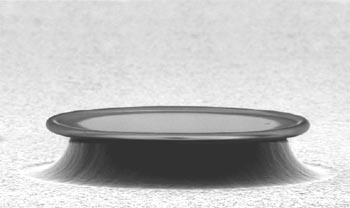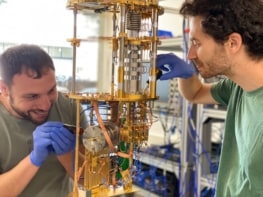The use of light rather than electrons to carry information is of increasing importance in high-speed communication. A major challenge in “photonics” is to combine components that can manipulate light with traditional chips. Now, Kerry Vahala and co-workers at the California Institute of Technology have fabricated microresonators-on-a-chip that have “Q” values ten thousand times larger than existing devices (D K Armani et al. 2003 Nature 421 925).

Resonators are widely used in electronics, microwaves and optics. There has been much interest in on-chip resonators in the last decade but the Q factor – the figure of merit for a resonant system – has been limited to about ten thousand. However, many applications require Q factors that are several orders of magnitude higher.
Vahala and co-workers have made toroid-shaped microcavities on silicon wafers that have Q factors of over a hundred million. The cavity confines light in a “whispering gallery” mode in which it orbits around the edge of the cavity at precise resonant frequencies as a result of total internal reflection.
The devices were fabricated on silicon wafers that had been coated with a layer of silicon dioxide. The researchers use photolithography, standard etching techniques and laser treatment to produce the structure shown in the figure above. The technique leaves the edges of the device smooth, which is important for the efficient confinement of light, and does not affect the underlying silicon dioxide support layer.
These devices could be used in a wide range of applications, such as optical sensors and microchip lasers. As standard processing techniques have been used to make the microresonators, they can be produced in large quantities. “Furthermore, they can be integrated with other functions such as electronic circuits,” Vahala told PhysicsWeb. The team now hopes to improve the Q factor of their device. “We hope to get it above one billion,” said Vahala.



